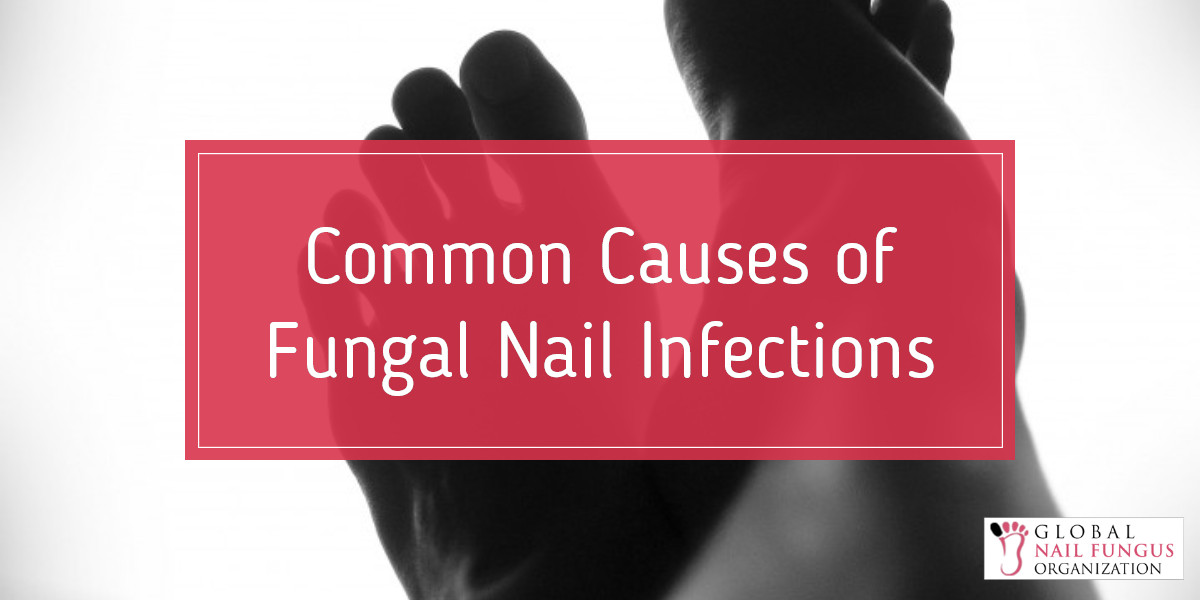 Common Causes of Fungal Nail Infections
Common Causes of Fungal Nail Infections
Table of Contents
Fungal Infections: An Overview
Athlete’s foot, yeast infections, ringworms, and jock itch – these might be medical terms you’ve encountered before, but did you know that the single cause of these problems is fungus? Fungal infections are caused by fungi that are common in the environment. Fungi can live in the air, soil, plants, and water and are often in the form of mushrooms, mold, and mildew. Most fungi are not dangerous, but there are a couple of types that may be harmful. They tend to thrive and reproduce rapidly in wet and moist environments. When fungi reproduce through tiny spores in the air, you can inhale these or they can land on you. Consequently, a fungal infection may affect your lungs or your skin.
In the skin, a fungal infection may manifest on the foot, also called athlete’s foot. This is a common fungal infection wherein the skin between the toes becomes soft and peels away, or the sole of the foot may peel, scale, itch, and blister. A jock itch, on the other hand, affects men who tend to sweat a lot. A fungal infection develops in the groin area, which is why it is called as such. If your skin appears to have circular, red, flat sores, accompanied by scaly skin, this might be another form of fungal infection called ringworms.
In the nails, onychomycosis is the medical term given to fungus that infects the nails. Fungal nail infections are common, but often are stubborn because they can be difficult to cure. Initially, a fungal nail infection may appear to be a small or streak of discoloration in the nail. Eventually, the nail may appear to be dull or rough in the surface. When left untreated, the nail may slowly decay and continually invade the other nails and tissues.
Who Gets Fungal Nail Infections?
Anyone is susceptible to getting fungal nail infection. Since fungi may live almost anywhere, it is probable that you might acquire this infection in your lifetime. There are risk factors that may make you more vulnerable to the infection.
Risk Factors for Fungal Nail Infection:
Age
Adults older than 60 years of age are prone to getting infected with nail fungus. As we age, there is a decrease in the circulation of blood around your hands and feet. It is vital that the blood flow is normal so as to deliver the immune fighting bodies that detect and fight invaders, such as fungi. But with older adults, this will become a problem, and therefore may cause infections such as nail fungus.
Health Issues
If you have psoriasis, you may be more likely to get infected with nail fungus. A study conducted by the Psoriasis and Psoriatic Arthritis Alliance showed that about 50% of people with psoriasis may also have a fungal infection in either their fingernails or toenails.
Illnesses that may cause a decrease of blood circulation in the feet and leg area, such as Peripheral Arterial Disease or Diabetes, may also be a risk for fungal nail infection. The blood carries vital immune bodies that can fight infection, such as fungi. However, if there happens to be a reduced blood flow in these extremities, the ability to fight off an invader like fungi may be harder for people with peripheral arterial disease or diabetes.
As mentioned, the immune system plays an essential role in combating nail fungus. Once the immune system is compromised by diseases such as HIV/AIDs and cancer, by medications like corticosteroids and TNF inhibitors, by having major operations such as organ transplants, or by prolonged hospitalization, it will be a challenge to fight off nail fungus.
Environmental Risk Factors of Fungal Nail Infections
A nail fungal infection may appear out of nowhere. Usually, because of our negligence and poor hygiene habits, we put ourselves at greater risk to contracting a nail fungal infection. It is important we now make ourselves conscious of our environment and what conditions make us more prone to this stubborn nail problem.
1. Living with someone with fungal nail infections can increase your risk.
A research involving 57 families with one member having nail fungal infection showed that there is a 33% possibility that one or more family members may get infected as well. Living in the same household, with the accessibility to the same bathroom and showers, may be the reason why there is an increased risk for families with at least one family member having a nail fungal problem.
2. Your working conditions may increase your chances of getting fungal nail infections.
Any job that entails you to work in hot, moist environments, especially with wet feet or hands, may lead to nail fungal infections. As previously said, fungi thrive in environments with high moisture; therefore, putting yourself in a perfect setting for fungi reproduction increases your risk.
3. Wearing heavy footwear may not be ideal for people who are prone to fungal nail infections.
Heavy foot wears tend to restrict proper airflow throughout the feet, making it sweatier. Sweaty socks are one of top causes of fungi growth and infection in the toenails.
4. It is possible to acquire fungal nail infections from walking barefoot in public areas.
Community pools, public showers, and spas are areas where you are best exposed to fungi that may also come from other people. Walking barefoot in these places puts you at risk for the fungal nail problem.
Prevention and Treatment of Fungal Nail Infections
Being aware of the causes and risk factors is the solution to protecting ourselves. Prevention is also key, so it’s best we know as well how we can guard our nails and keep them healthy.
-
Wash your hands and feet regularly and keep your nails short and dry. Apply proper hand washing techniques, and make sure you dry them thoroughly.
-
Wear socks that absorb sweat. There are special socks nowadays that are effective in keeping your feet dry. Change your socks once they get damp and wet from sweat.
-
Choose shoes that reduce humidity. Avoid heavy and tight shoes that keep your feet warm and sweaty. It’s also better if you could use open-shoes.
-
Don’t go barefoot in public places. Wearing slippers in public areas such as swimming pools, showers, and spas will help you avoid getting exposed to fungi.
-
Wash your hands after touching an infected nail. Nail fungus is highly contagious. Try and avoid infecting other nails by washing well after touching an infected nail.
Treatments
There are many solutions and treatments available to cure your nail fungal infection. The treatment ranges from home remedies, anti-fungal topical creams, oral medicines, and surgery. Knowing which treatment is best may differ based on the severity of the problem.
-
Topical Treatments – The best and most effective treatment so far is through topical remedies. They contain undecylenic acid and tea tree oil that are proven to effectively treat nail infections. There are many topical treatments in the market nowadays, so it’s best to consult your dermatologist to know which one will work best for you.
-
Home Remedies – Home remedies are easily accessible, though the efficiency is not assured. There are very few studies that show they have actually worked, but people often try it out based on recommendations. Home remedies such as bleach and vinegar have been proven to be ineffective and even harmful to your health. It is said that using certain essential oils with anti-fungal properties can help fight fungal infections.
-
Oral Medicines – Some people resort to oral prescription and antibiotic drugs. However, most oral treatments have side effects especially when used by people with liver problems. Oral medication should only be considered when recommended by a physician.
-
Surgical and Laser Treatment – For those suffering from moderate to severe nail fungal infections, they may give expensive surgical and laser treatments a try. This is relatively new in the field of treating nail infections, and further study and research is recommended.
Conclusion: Common Causes of Nail Fungus
Fungi are everywhere, especially in wet and moist environment. They can infect our skin, especially our nails, causing what is medically known as onychomycosis. There are many causes and risk factors that may put us at risk for getting nail fungal infections. People over the age of 60 and those with health issues such as diabetes, peripheral arterial disease, psoriasis, and weakened immune systems are those who are more prone to the infection. Your environment also plays a huge effect to your susceptibility. Prevention is always better before treatment, so prior to the onset of a possible fungal nail infection, awareness to your surroundings and knowledge to these common causes and risk factors are keys. Visit Global Nail Fungus Organization for more information on nail fungal infections.






